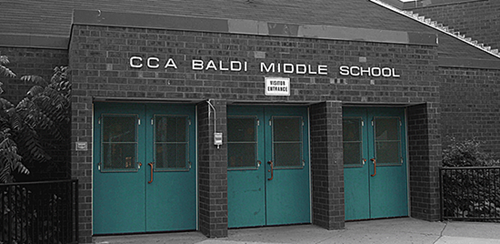By Robert Sun

The following is a short synopsis of an article published in THE LONDON ECONOMIC. Click here to read the full article, covering the topics: Deep Practice; Critial Thinking and Chunking; Stocking the Pantry; and Lessons From Deep Practice.
It’s not often that an inner-city American school rises to the top of national rankings in academics, and yet Baldi Middle School in Philadelphia has beaten the odds— not just once, but multiple times. Its track record reveals some important insights for anyone concerned with improving the learning experience for children.
In First In Math’s nationwide online competition involving more than 6,000 schools in 45 states, Baldi students solved nearly 20 million math problems correctly in just ten months, and ended the school year ranked #1. Baldi has consistently ranked among the top ten schools in the US in this competition for each of the past five years.
How was this productive culture established? Why do Baldi students embrace math with such enthusiasm when the subject intimidates so many children?
To begin with, Baldi’s leadership has instilled a high-performing culture characterized by three traits: the children feel attached to their school and its mission; the environment supports productivity and performance; and students are energized to sustain accelerated effort over time.
But there’s something also at work in Baldi’s classrooms—a concept known as Deep Practice. The idea of Deep Practice is evident in many pursuits, but rare in academics. In sports, when we swing a bat and miss the ball, we receive instant feedback through our senses. We learn easily and naturally through a practice loop where proficiency is attained through immediate awareness of success or failure.
When solving math problems, there usually is no similar form of encouragement. However, First In Math’s immediate feedback loop allows students to tackle a complex subject in manageable parts.
The benefits of Deep Practice go beyond curriculum attainment. They are vital to meeting the most ambitious requirements in modern education—including the problem-solving and critical-thinking objectives of the Common Core State Standards in Mathematics (CCSSM) currently being instituted in the majority of American schools nationwide.
Critical thinking is one of the hardest mental skills to acquire, mostly because we humans don’t like to think. That’s because our brains were not designed to think. Our brains evolved to quickly process vast quantities of visual information.
Computers can now beat the best human players in chess, but we are just beginning to design computers that can steer robots over uneven terrain or even drive a truck, because processing the vast amount of changing visual information is so complex.
The portion of our brain allocated to thinking is the neo-cortex, commonly referred to as the “working memory.” It is by nature limited. That is why we have difficulty carrying on more than two conversations simultaneously; overtax our working memory and our ability to reason slows or may break down altogether.
There are two ways for information to enter into our working memory for processing. The first is from the environment—what we experience through our senses and problems that we encounter. The second is to draw from our “long-term memory,” which is our storehouse of accumulated factual knowledge.
We have known for more than 100 years, thanks to studies conducted by Hermann Ebbinghaus in the 1800s and confirmed by modern research, that 90 percent of what a child is taught in class is forgotten within 30 days. We sometimes forget that without students taking ownership through active engagement and processing information into long-term memory, we are basically on a treadmill.
We need to learn from the Deep Practice successes of Baldi Middle School and other Philadelphia schools.
Since 2002, the year it began employing Deep Practice techniques district-wide, the Philadelphia School District has seen its percentage of students scoring “advanced” or “proficient” in maths more than triple to nearly 60 per cent. Using Deep Practice to stock a child’s pantry may not be the most glamorous aspect of maths education. But when our students’ pantries are full, it’s evident there’s no limit to what they can accomplish—or to the future they will be inspired to invent.
ROBERT SUN is the CEO of Suntex International and inventor of First In Math, an online program designed for self-paced learning in mathematics. Click here to read the full article, including the topics Deep Practice; Critial Thinking and Chunking; Stocking the Pantry and lessons From Deep Practice.